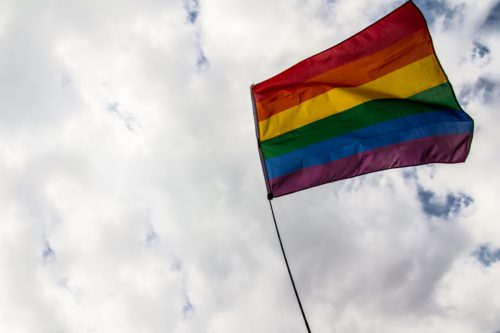
LGBTQ erasure threatens to leave out some of the community’s minority groups.
Photo courtesy of emma (Flickr)
Erasure, commonly seen in many LGBTQ sexualities and gender identities, is the act of erasing something. As much as sexuality and gender are fluid, and as progressive as our society may be, erasure is working to hold back the idea of acceptance and leads to negative views of the LGBTQ community.
Sexual fluidity is being celebrated more often, but this can come with the erasure of identities that are more specific, such as lesbians. In thinking that sexuality is extremely fluid, many have come to embraced “queer” and other more encompassing identities.
Lesbian ersaure is common in popular media, where lesbians are often eroticized for straight men and don’t represent the broad spectrum of lesbian individuals who exist in the world. Often, lesbian women are placed into two stereotypical categories of appearance: butch and femme. Butch individuals tend to gravitate things deemed masculine. They may have interest in things considered masculine, like sports, and may wear more loose-fitting, menswear-style clothing and cut their hair short. Femmes, on the other hand, typically embrace femininity, dressing in more traditionally feminine clothing styles in addition to holding interests deemed feminine by society’s standards.
Often, the stereotype of butch lesbians can be misconstrued as women who desire to transition to men, when lesbian is really their identity.
Femme invisibility is huge, as many people think femme individuals are straight based on their appearance. The perception that they may be “straight passing” erases their sexual orientation.
All of this is not only making those who identify as lesbians feel left out, but may also leave them questioning themselves. The effect on those who are just coming out is even more detrimental. In seeing lesbian erasure, it may make newly-outed individuals choose another identity for the sake of fitting in.
Bisexual erasure is the most common, forming its own term, “bi erasure.” There are many myths surrounding this identity, which is probably what causes all of the confusion. Some believe bisexuality is just a phase, while others believe that it is not real or that bisexual individuals are experimenting.
One of the most common forms of erasure is when bisexuals are in relationships. If an individual is in a same-sex relationship, they are often seen as gay and their bisexual identity is erased. In reality, their bisexual identity still exists. This leads to bisexuals constantly feeling a need to prove themselves, which no one should ever have to do.
Asexual erasure is also common because it is a sexuality that many people are unaware of. Asexuality is defined as those who do not experience sexual attraction. With so many people identifying as sexual, those on the asexual spectrum are sometimes not even acknowledged. Myths that asexuality is an illness or that asexuals are just abstaining from sex often marginalizes this sexual identity. Asexuality is not as visible as other identities because of the LGBTQ acronym. However, not all asexuals are queer, which leads to the erasure of straight asexuals.
In addition to these identities, we also see erasure in the LGBTQ community itself. Some hope for the day people won’t have to “come out,” and everyone will just be seen as people. This can also be seen in that idea of sexual fluidity, in that everyone is a little queer, so there’s no need for distinct labels. While this may be ideal for some people, others really enjoy identifying within a certain label, even if it is not as fluid as others.
At the same time, having separate communities for minorities is really important, because it allows oppressed groups to stick together. This allows for the potential for activism campaigns, social media platforms and groups with people who are all passionate about bringing visibility and acceptance to a specific group.
For the LGBTQ community to be erased, all of its identities would have to be accepted as the norm, which I don’t see happening anytime soon. But, I don’t think that this is a problem. The passion and work that is being done to move towards acceptance should be done together, and not erased within crowds of those who are more privileged.


